Introduction
Exploring the best crystals for depression has become a beacon of hope for many seeking alternative methods to enhance their emotional well-being. Depression, a pervasive condition that affects millions worldwide, can significantly hinder one’s quality of life, manifesting in various forms such as persistent sadness, lack of interest in activities, and an overwhelming sense of despair. More individuals are pursuing the ancient practice of crystal healing in the quest for holistic healing. This method, deeply rooted in historical traditions, posits that certain crystals can serve as powerful tools in alleviating emotional distress, offering a complementary approach to conventional treatments. As we delve into the world of crystals, it’s essential to approach this journey with an open mind, considering the potential benefits and the importance of integrating these practices with other proven therapeutic interventions for depression.
Understanding Crystals and Their Connection to Emotional Well-being
Crystals have long been revered for their beauty and purported healing properties, with many cultures worldwide incorporating them into practices aimed at improving physical, emotional, and spiritual health. The belief in the healing power of crystals often centers around the concept of energy and vibration. Each type of crystal possesses a unique vibrational frequency that can interact with the body’s energy fields, potentially bringing balance and harmony to the individual’s emotional state.
The Science Behind Crystals and Emotional Healing
While the scientific community remains skeptical about the direct healing effects of crystals on mental health conditions like depression, some suggest that the placebo effect may play a significant role in their perceived efficacy. The placebo effect occurs when a person experiences a real improvement in their condition after using a treatment with no therapeutic effect, which can be attributed to their beliefs and expectations about the treatment. For a deeper understanding of the interplay between mind and matter in the context of healing, this article on the science of crystals provides insights into how belief systems can influence our physical and emotional well-being.
Emotional Resonance and Crystal Selection
Choosing a crystal for emotional support is often a highly personal process guided by intuition and the individual’s unique response to a crystal’s energy. The colors, shapes, and textures of crystals can evoke different feelings and associations, which may contribute to their impact on the individual’s mood and emotional state. For those new to crystal healing, exploring a variety of crystals and observing their responses can be a valuable step in discovering which stones resonate most strongly with their emotional needs.
In the journey towards emotional healing, it’s essential to approach crystal therapy as one component of a comprehensive wellness plan. Combining crystal therapy with other proven mental health interventions, such as counseling, medication, or mindfulness practices, can offer a more holistic approach to managing depression and enhancing overall well-being.
The Best Crystals for Depression
Navigating through depression can be a challenging journey, and many seek complementary therapies to provide comfort and support. Among these, healing crystals are valued for their purported energetic properties that can influence the user’s emotional and mental well-being. Here’s a look at some of the most recommended crystals for aiding those experiencing depression, with new and relevant sources for further exploration.
Lepidolite: The Stone of Transition
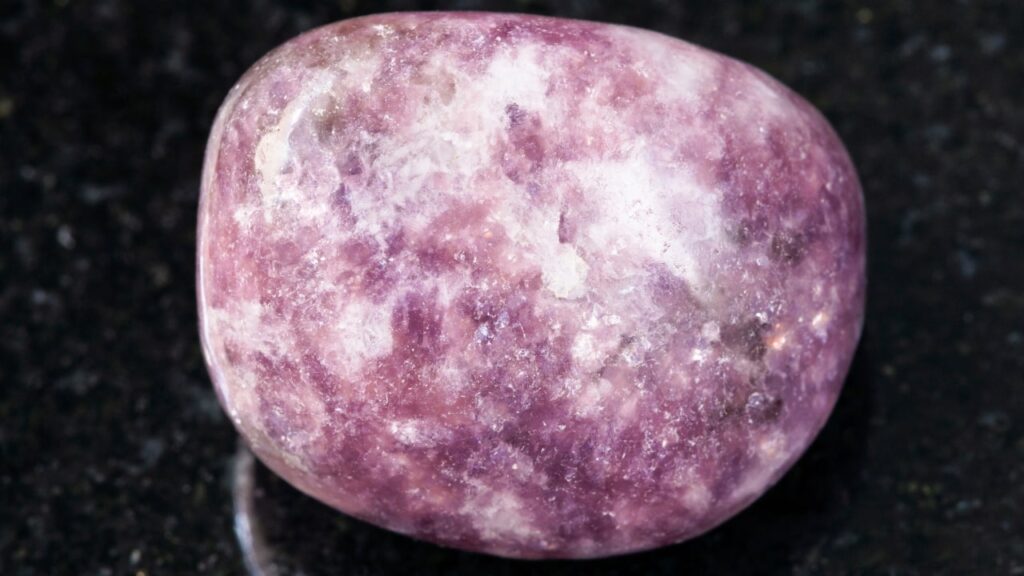
Lepidolite, rich in lithium, is often used in treatments for mood disorders. This crystal is believed to bring balance and harmony, helping to stabilize mood swings and alleviate stress. Its gentle energy can be particularly soothing during times of change or turmoil, making it a favored stone for those dealing with depression. For more insights into Lepidolite and its uses, Sabino Recovery offers a comprehensive overview of how this and other crystals can support emotional healing. (Find on Amazon)
Sodalite: The Stone of Peace
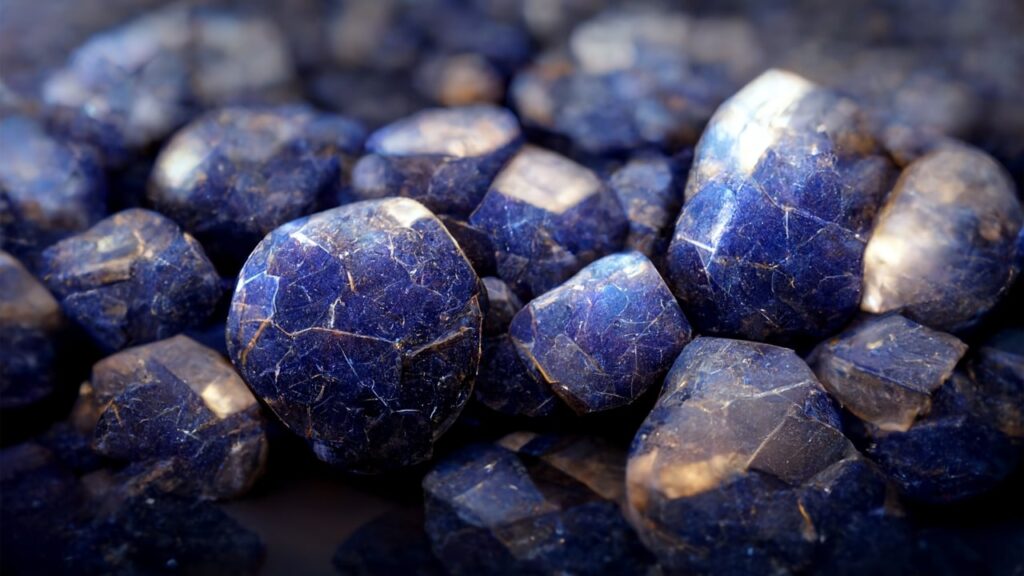
Sodalite is known for its ability to promote peace and tranquility, qualities that are often sought after by those battling depressive symptoms. It encourages rational thought, objectivity, and the verbalization of feelings, which can be beneficial for those who find it challenging to communicate during depressive episodes. Sodalite’s calming effect on the mind makes it a valuable tool for meditation and deep emotional exploration. (Find on Amazon)
Tiger’s Eye: The Stone of Courage
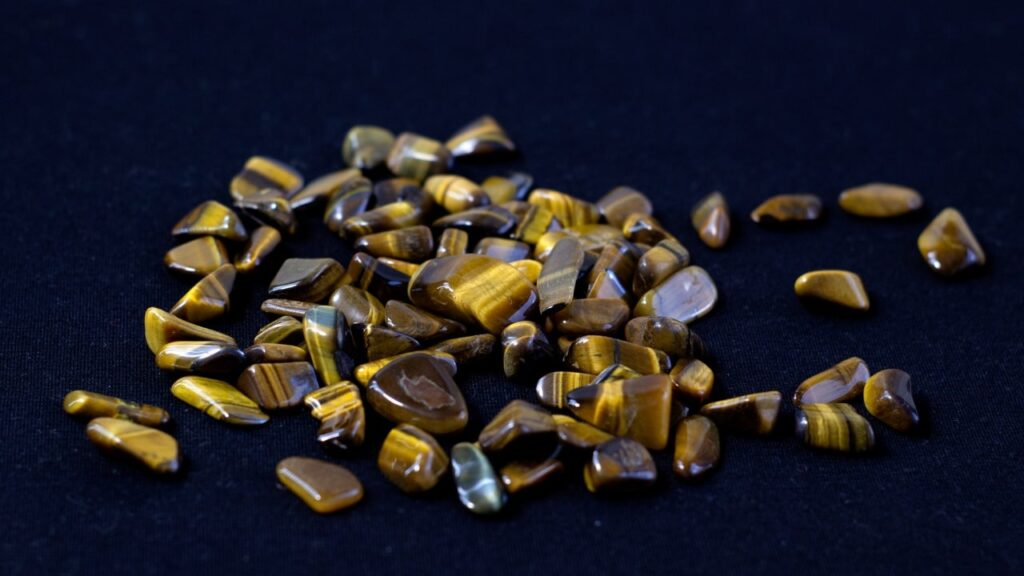
Tiger’s Eye is a powerful stone that helps release fear and anxiety, fosters a balance between extremes, and encourages emotional harmony. Its grounding energy can be beneficial for those who feel disconnected from their sense of self or reality due to depression. Tiger’s Eye is also known for its ability to boost confidence and resilience, providing support during challenging times. (Find on Amazon)
Aquamarine: The Stone of Courage
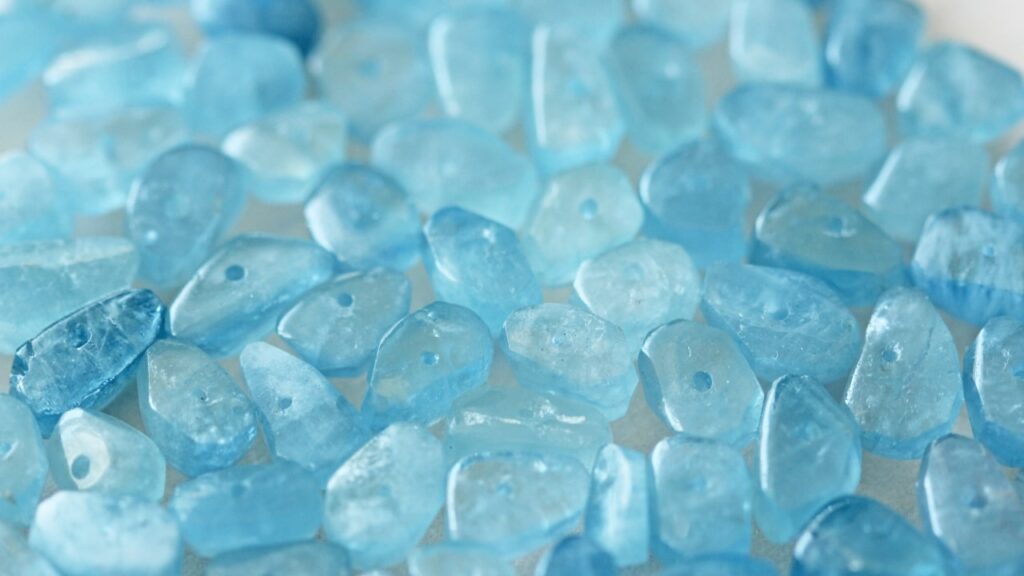
Aquamarine is known for its soothing energies, which can be incredibly beneficial for those dealing with stress and overwhelming emotions. This crystal promotes clarity of mind, relaxation, and the courage to overcome fears and phobias. Its gentle, flowing energy is reminiscent of tranquil waters, providing a calming influence that can help ease the symptoms of depression. (Find on Amazon)
Black Tourmaline: The Protective Stone
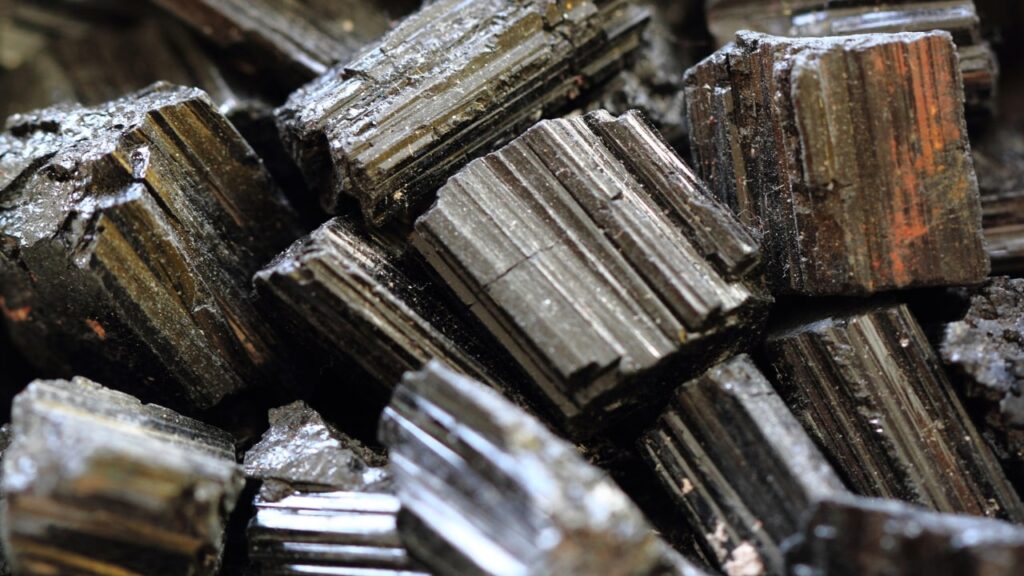
Black Tourmaline is renowned for its protective properties, shielding against negative energies, including internal negative thoughts that can exacerbate depressive symptoms. It’s also known for its grounding effects, helping individuals to stay connected to the present moment rather than being overwhelmed by past or future worries. (Find on Amazon)
Incorporating these crystals into your daily life can be done in various ways, such as carrying them with you, placing them in your living space, or using them during meditation practices. It’s important to remember that while crystals can offer support, they should not replace professional medical treatment for depression. Always consult a healthcare provider for a comprehensive approach to mental health care.
How to Use Crystals for Depression
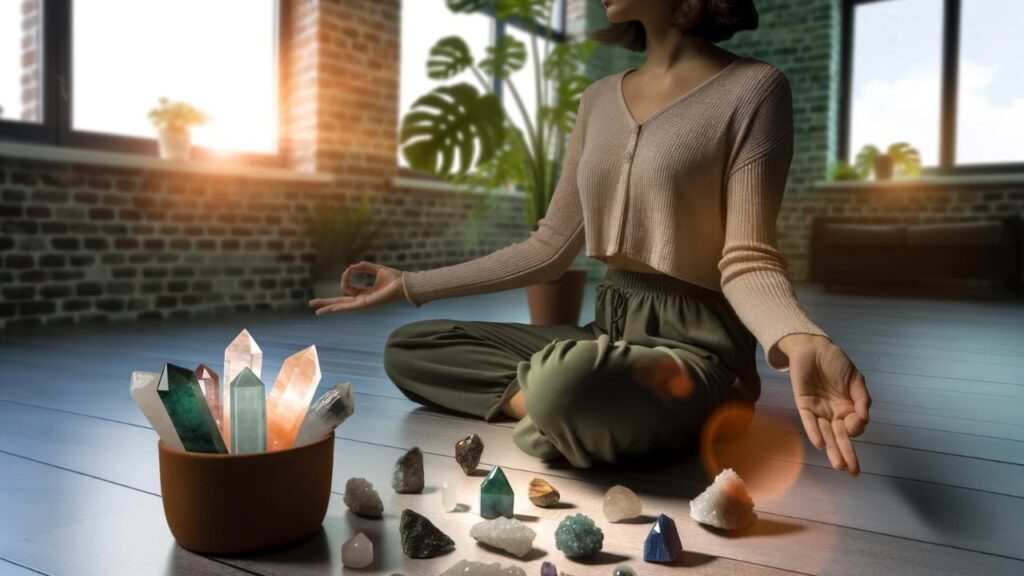
Incorporating crystals into your daily life to combat depression involves more than just possessing them; it’s about actively engaging with their energy through various practices. Here’s a guide on how to harness the potential of crystals for emotional healing:
Carrying Crystals with You
One of the simplest ways to connect with the energy of your chosen crystals is to carry them with you throughout the day. Whether tucked in your pocket, worn as jewelry, or placed in your workspace, having these stones close by can be a constant source of support and comfort. For a deeper dive into the types of crystals best suited for this purpose, consider exploring resources like Village Rock Shop’s guide on crystals and stones for depression, highlighting how different stones can address various aspects of depression.
Meditation and Mindfulness with Crystals
Meditation and mindfulness practices can be significantly enhanced by incorporating crystals. Holding a crystal or placing it on your body during meditation can help focus your intentions and deepen your practice. The calming and grounding energies of stones like Smoky Quartz or Amethyst can be particularly beneficial in creating a serene space for reflection and healing. For those new to meditation or looking to deepen their practice, this guide on meditating with crystals offers practical tips and techniques.
Creating a Healing Space
Your living environment plays a crucial role in your emotional well-being. Creating a dedicated space for relaxation and healing, adorned with crystals, can provide a sanctuary for you to unwind and recharge. Placing crystals in areas where you spend a lot of time, such as your bedroom or living room, can help create a soothing atmosphere. Crystals like Rose Quartz can promote love and peace, while Lepidolite is known for its stress-reducing properties.
Crystal Grids for Intention Setting
Crystal grids are an advanced method of using crystals, where multiple stones are arranged in a geometric pattern to amplify their collective energy and focus on a specific intention. Setting up a crystal grid for depression might involve stones that promote emotional balance, clarity, and positivity. For guidance on creating and activating a crystal grid, resources like Tiny Rituals’ exploration of crystals for depression can be invaluable.
Engaging with a Community
Engaging with a community of like-minded individuals can enhance your journey with crystals. Sharing experiences, tips, and success stories can provide additional insights and support. Online forums, local workshops, and social media groups dedicated to crystal healing are great places to connect with others on a similar path.
Remember, while crystals can be a supportive tool in managing depression, they should not replace professional medical advice or treatment. It’s essential to consult with healthcare professionals and consider crystals as a complementary practice alongside other forms of therapy.
Complementary Practices for Using Crystals
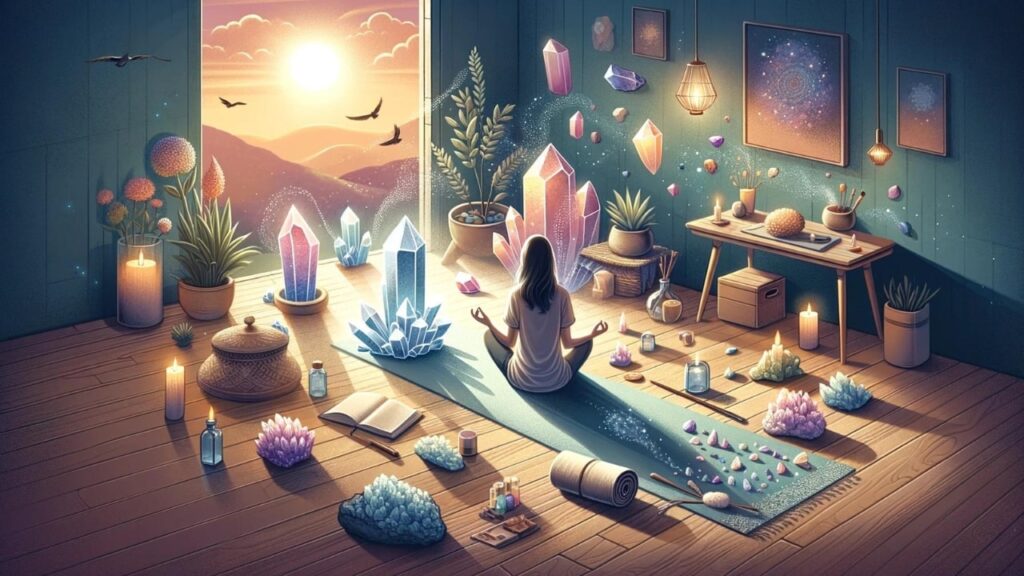
While crystals can be a comforting and empowering tool in managing depression, they are most effective when used in conjunction with other complementary practices. These holistic approaches can enhance healing, offering a more rounded approach to emotional well-being.
Meditation and Mindfulness
Meditation and mindfulness are powerful practices that can significantly reduce stress and improve symptoms of depression. Incorporating crystals into these practices can amplify their benefits, creating a focused and enriched meditative experience. For those interested in exploring this synergy further, Verywell Mind offers insights into how healing stones can complement mental health practices like meditation and mindfulness.
Yoga and Physical Movement
Yoga and other gentle physical exercises improve physical health and profoundly impact mental well-being. Engaging in these activities while keeping crystals nearby or incorporating them into your yoga space can help align your physical and emotional energies. Yoga, emphasizing breath and movement, can be particularly synergistic with crystals’ stabilizing and grounding properties.
Aromatherapy and Essential Oils
Aromatherapy, the therapeutic use of essential oils, can be an excellent complement to crystal healing. Certain scents, like lavender for relaxation or citrus for uplifting energy, can enhance the atmosphere and support the emotional benefits sought from crystal therapy. Combining crystals with essential oils by placing drops on or near your stones can create a multi-sensory environment conducive to healing and relaxation.
Journaling and Reflective Practices
Journaling and other reflective practices offer a way to process emotions, track progress, and set intentions. Pairing this practice with crystal healing by holding a crystal while journaling or placing stones in your journal can enhance your reflective process, providing clarity and emotional release.
Professional Therapy and Counseling
It’s essential to recognize the value of professional mental health support in managing depression. Therapists and counselors can provide critical guidance and coping strategies. Crystals can be a physical reminder of personal growth and intentions set during therapy sessions, acting as a supportive tool alongside professional advice.
Community Support and Sharing
Engaging with a community, whether online or in person, that shares your interest in crystals and holistic healing can provide additional support and insight. Sharing experiences and learning from others can be incredibly validating and enriching. (www.spiritualforums.com)
By integrating these complementary practices with crystal healing, individuals can create a holistic self-care routine that addresses the mind, body, and spirit. Remember, the journey to emotional well-being is personal and unique; what works best will vary from person to person. Exploring different practices and finding what resonates with you is critical to building an effective and nurturing healing process.
Success Stories and Testimonials
The journey of healing from depression is profoundly personal and varies significantly from one individual to another. Among the myriad tools and practices people use for support, crystals have emerged as a source of comfort and empowerment for many. While scientific evidence on the efficacy of crystals in treating depression is limited, the anecdotal success stories from those who have incorporated them into their healing process are both inspiring and worth exploring.
Personal Accounts of Transformation
Many individuals have shared their experiences of how crystals have brought positive changes to their lives, offering a sense of peace, balance, and renewed energy. For instance, Vice features a skeptical individual’s journey into the world of crystals, detailing the surprising shifts in mental state and well-being they encountered. Such stories highlight the potential of crystals to catalyze personal growth and emotional healing.
The Role of Crystals in Holistic Healing
In holistic healing, crystals are often valued for harmonizing the mind, body, and spirit. Mango Clinic discusses the use of specific healing crystals for depression, emphasizing their long-standing role in various healing traditions. These accounts underscore the importance of viewing crystals as part of a broader wellness strategy that may include therapy, medication, and lifestyle changes.
Community Support and Shared Experiences
Engaging with communities interested in crystal healing can provide additional insights and encouragement. Platforms like Reddit offer spaces for individuals to discuss their experiences with crystals, exchange tips, and offer support to one another. Such interactions can be incredibly validating and enriching, fostering a sense of belonging and shared purpose.
It’s essential to approach these success stories with an open mind, recognizing that what works for one person may not work for another. The power of belief and the placebo effect cannot be underestimated in their ability to influence our experiences and perceptions. As we explore these personal accounts, we are reminded of the diverse and multifaceted nature of healing, encouraging us to find the tools and practices that resonate most deeply with our journey.
Choosing the Right Crystal for You
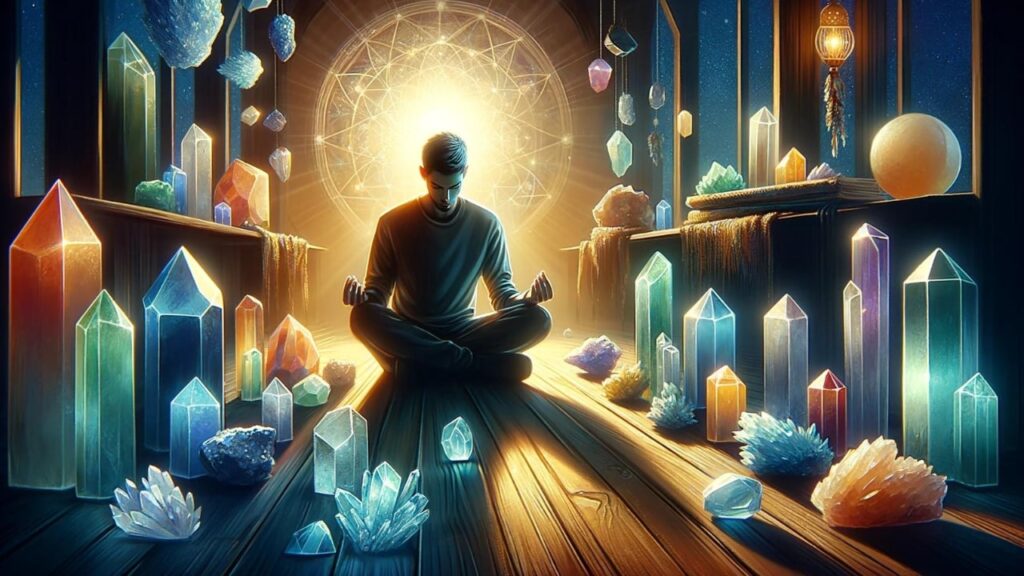
Selecting the right crystal for depression is a deeply personal journey, one that involves tuning into your own intuition and emotional needs. With the myriad of crystals available, each possessing unique properties and energies, finding the one that resonates with you can be a transformative part of your healing process.
Understanding Crystal Properties
Each crystal is known for specific healing properties that align with various aspects of emotional and mental well-being. For instance, Amethyst is celebrated for its calming and intuitive properties, making it a popular choice for those seeking relief from anxiety and stress, which often accompany depression. On the other hand, Citrine, known as the “happiness stone,” is believed to radiate positive energy and uplift the spirit.
Intuition and Personal Resonance
When choosing a crystal, consider your intuition and how you feel when you hold or look at the stone. You might be drawn to a crystal’s color, texture, or how it makes you think. This personal resonance indicates that a crystal’s energy aligns with your own, suggesting it could be a beneficial tool in your healing journey.
Research and Exploration
Taking the time to research and learn about different crystals can also guide your selection process. Resources like Tiny Rituals offer in-depth insights into various crystals and their associated healing properties, providing a valuable starting point for those new to crystal therapy.
Consulting with Experts
If you’re unsure where to start or feel overwhelmed by the choices, consider consulting with a crystal healer or visiting a local metaphysical shop. Experts in the field can offer personalized recommendations based on your specific needs and experiences with depression.
Trusting the Process
Remember, selecting a crystal is as much a part of the healing journey as using it. Be open to experimentation, and be encouraged if the first crystal you choose feels like there are better matches. Healing is a journey, and finding the right crystal for you is a step along the path.
By approaching the selection process with an open heart and mind, you invite the possibility of discovering a powerful ally in your quest for emotional balance and well-being.
Maintaining and Cleansing Your Crystals

To ensure your crystals continue to serve as practical tools in your emotional healing journey, it’s crucial to maintain and cleanse them regularly. This process helps to clear any absorbed negative energies and recharges the crystals to their natural state.
Why Cleanse Your Crystals?
Crystals are believed to absorb and hold onto the energies they encounter. Over time, these energies can accumulate, diminishing the crystal’s effectiveness. Cleansing your crystals helps reset their energy, ensuring they remain vibrant and powerful, aiding your healing process.
Methods for Cleansing Crystals
- Running Water: Water is often used to cleanse crystals, as it’s believed to wash away negative energy. Holding your crystal under natural running water, such as a stream or river, is ideal. However, tap water can also be adequate. Healthline provides a comprehensive guide on using water and other methods to cleanse your crystals.
- Moonlight Bath: Placing your crystals under the moonlight, especially during a full moon, is a gentle and powerful way to cleanse and recharge them. The moon’s energy is believed to purify and renew the crystals, enhancing their natural properties.
- Smudging: Involves burning sacred plants like sage, palo santo, or sweetgrass and passing your crystals through the smoke. This ancient practice is thought to clear negative energy and restore balance. Gemporia offers insights into smudging and other cleansing techniques.
- Sound Cleansing: Sound vibrations from singing bowls, bells, or tuning forks can also cleanse crystals. The sound waves are believed to break up and clear away stagnant energy.
- Sunlight: Exposing crystals to sunlight can bathe and energize them. However, be cautious, as some crystals can fade or become damaged by prolonged exposure to the sun.
- Earth Burial: Burying your crystals in the earth allows them to discharge accumulated energies and recharge with the earth’s natural vibrations. That method is particularly grounding and rejuvenating for earth-related crystals.
- Other Crystals: Certain crystals, like Selenite and Clear Quartz, are believed to have self-cleansing properties and can be used to cleanse other crystals. Placing your crystals near these cleansing stones can help purify and restore them.
Maintaining Your Crystals
- Handling with Care: Treat your crystals with respect and gentleness. Avoid dropping or knocking them, as many crystals can be fragile.
- Regular Cleansing: Depending on how often you use them, cleanse your crystals regularly to keep their energies clear and potent.
- Intention Setting: After cleansing, hold your crystal and set your intentions for how you wish it to assist you. This helps to personalize and enhance the crystal’s connection to you.
By incorporating these practices into your routine, you ensure that your crystals remain potent allies in your journey toward emotional well-being.
FAQ: Best Crystals for Depression
While there’s no scientific evidence proving crystals cure depression, many individuals find them to be comforting and supportive as part of a holistic approach to emotional well-being.
Amethyst is often recommended for its calming properties, but its effectiveness can vary based on personal resonance with the crystal.
Crystals can be worn as jewelry, placed in living spaces, carried in pockets, or used during meditation to provide support and comfort.
It’s advisable to cleanse your crystals regularly, especially after heavy use or when you feel their energy has diminished, typically once a month or as needed.
Yes, you can combine different crystals, but ensuring their energies complement each other for the best effect is essential.
Keep your crystals in a clean, positive environment. Some prefer keeping them close, like on a bedside table or in a personal workspace.
Yes, recharging is recommended to maintain a crystal’s energy. That can be done through exposure to moonlight or sunlight or by placing them on a selenite charging plate.
While there aren’t specific crystals to avoid universally, choosing crystals that resonate positively with you is essential. If a crystal makes you feel uneasy or hostile, it’s best to avoid it.
The experience is highly individual. Some may feel immediate comfort, while others may take time to notice the subtle changes in their emotional well-being.
While crystals can be supportive, they should not replace professional medical advice. It’s always best to consult with a healthcare provider for comprehensive treatment of depression.
Concluding our exploration of the best crystals for depression
Embarking on a journey with crystals to navigate the challenges of depression can be a profoundly enriching and transformative experience. Throughout this article, we’ve explored the best crystals for depression, delved into how they can be used, and discussed complementary practices that enhance their effectiveness. We’ve also shared success stories and guided you on selecting the right crystal for you and essential tips for maintaining and cleansing your crystals to ensure their energies remain vibrant and supportive.
As we conclude, it’s important to remember that while crystals can offer comfort, inspiration, and support, they should complement rather than replace conventional treatments for depression. Integrating crystal therapy with professional medical advice, counseling, and personal self-care practices creates a holistic approach to managing depression, fostering a journey toward healing that encompasses mind, body, and spirit.
We encourage you to explore the world of crystals with an open heart and mind, allowing your intuition and personal experiences to guide you toward the stones that resonate most deeply. Whether you’re drawn to the calming presence of Amethyst, the uplifting energy of Citrine, or the grounding force of Smoky Quartz, each crystal has a unique story to tell and a unique gift to offer on your path to emotional well-being.
For those interested in expanding their knowledge and application of crystals, consider further reading and resources, such as our guide on Best Crystals for Manifestation, and always remember the importance of consulting healthcare professionals for severe cases of depression.
Ultimately, the journey with crystals is as much about self-discovery and personal growth as it is about healing. We wish you a path filled with light, clarity, and peace as you explore the harmonious balance between the ancient wisdom of crystals and the modern pursuit of emotional health and well-being.
